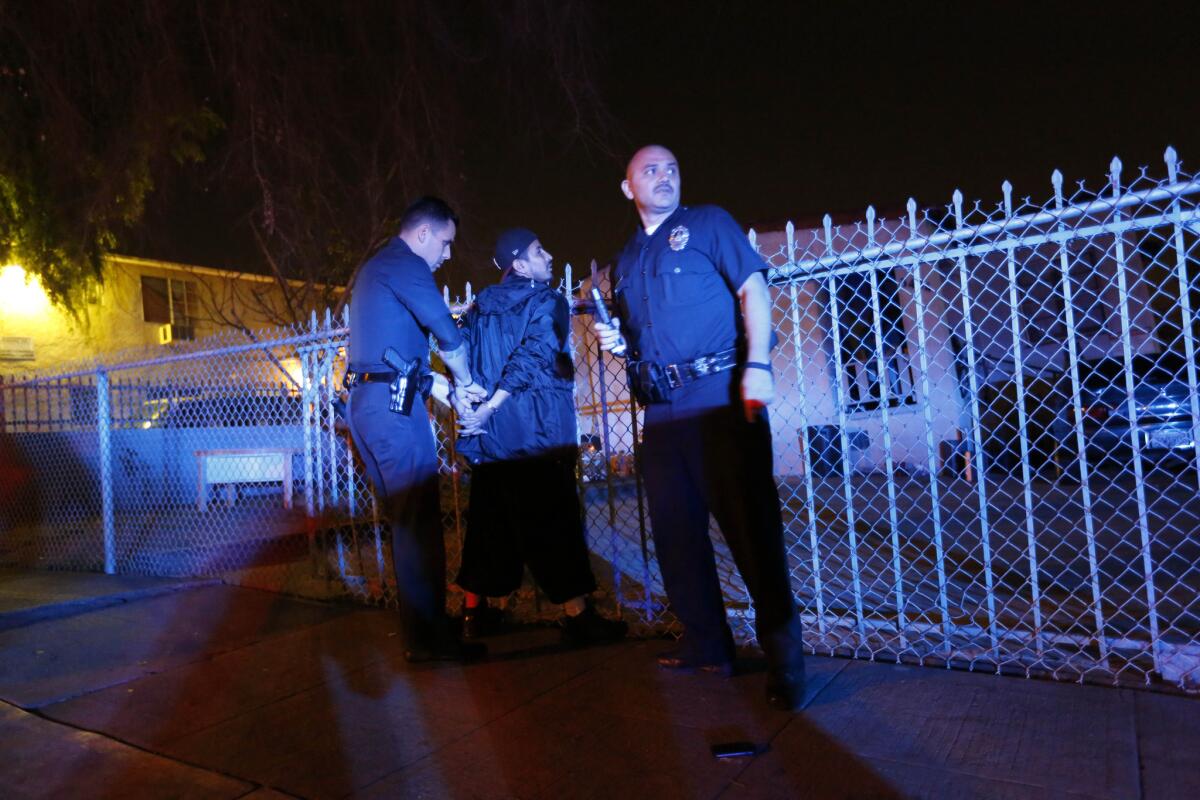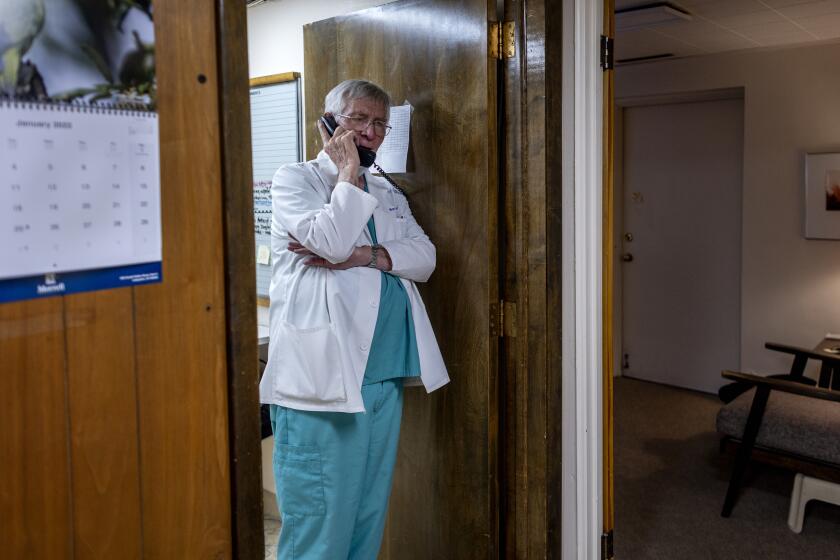Opinion: California’s Prop. 47 revolution: Why are police refusing to make misdemeanor arrests?

Officer Jose Ibarra assists with the arrest of a suspected gang member in February. Many officers say an uptick in crime is the result of Proposition 47. Arrests are down for many crimes that formerly were felonies but now are misdemeanors.
California law distinguishes between felonies, misdemeanors and infractions, with different punishments for each. So when Proposition 47 changed six felonies into misdemeanors, it of course made a real-world difference: Maximum penalties for drug possession and five theft crimes dropped from an average of three years in state prison (although for the past few years, most of those sentences have been served in county jail) to, now, up to one year in county jail. Sentences were reduced, but jail time remains part of the mix.
But there is a procedural difference as well, and critics of Proposition 47 often speak as if those differences made the change even more drastic, in effect decriminalizing those six offenses, turning them into infractions like parking violations, with officers issuing citations or tickets instead of making arrests, and offenders not bothering to show up for their court dates in the belief that jail time was no longer possible.
In the post-Proposition 47 debate, the conversation is generally whittled down to this: Officers and prosecutors say they no longer can arrest people for these crimes. And because arrests are down, they say, crime in California is increasing and drug offenders are not getting treatment.
Defenders of Proposition 47 respond that crime rates go up and down for many reasons, and that rising crime in cities outside California shows that there’s not necessarily a causal link between crime and the change in law here. And besides, they add, all the same procedures and remedies that were available before are still available, except that jail sentences for those six crimes are held to a one-year maximum.
There’s something missing from this discussion. If people in law enforcement believe that crime is rising because they aren’t making arrests, then why aren’t they making arrests? What is it about the law, or about police, prosecutorial, court and jail practices, that cause fewer arrests and prosecutions this year for crimes that are misdemeanors than for last year, when the same crimes were felonies?
There appear to be seven key steps in the criminal justice process where Proposition 47 changed the law, or local practices, or both, and that may be in part responsible for fewer arrests. Each step brings with it an assumption or assertion that must be examined if we’re to determine where there may be a breakdown in public safety — and what can be done about it.
We’ll start today with the beginning of the process — the arrest.
Assumption: Police can’t arrest you for a misdemeanor if they didn’t catch you in the act.
Officers with probable cause to believe that someone committed a felony, such as a home break-in, can arrest that person, take him into custody, transport him to the station, book him, hold him for up to 48 hours and refer charges to the prosecutor, who will bring him before a judge.
But not if the crime is a misdemeanor. To make a misdemeanor arrest, officers have to either get a warrant or have probable cause to believe they witnessed the crime taking place in their presence.
On first blush, that sounds like it would be fairly difficult. How likely is it that a police officer or sheriff’s deputy just happens to be standing by when a suspect grabs an item worth less than $950 (the dividing line for felony and misdemeanor thefts) off the store shelf?
Even though there are six felonies that became misdemeanors, law enforcement officials from jurisdictions around California report that just one of them accounted for 8 of every 10 pre-Proposition 47 arrests and prosecutions: drug possession.
And drug possession is an offense that, by definition, is committed in the officer’s presence. The officer encounters the suspect and either comes across the illegal substance while conducting a legitimate pat-down, or asks and gets permission to search, or sees the illegal substance in plain view. That’s the way it worked before Proposition 47. That’s the way it continues to work today.
Besides, police can and routinely do arrest people for other suspected misdemeanors they didn’t see take place. Lower categories of domestic violence and child endangerment, and particular assaults, including any that occurred on school grounds while class was in session and any directed at elderly people, firefighters and various others named in particular statutes, are misdemeanors for which officers can — actually, must — take the suspect into custody.
The “presence of the officer” requirement for a misdemeanor arrest is sometimes mentioned as the reason drug suspects no longer are taken into custody after Proposition 47 was adopted, but that’s off-base. The change in practices is caused by other steps in the criminal justice process, such as the decision on whether to issue a citation or arrest and transport the suspect to the station. That’s what we’ll examine in the next post.
Follow me @RGreene2
More to Read
A cure for the common opinion
Get thought-provoking perspectives with our weekly newsletter.
You may occasionally receive promotional content from the Los Angeles Times.











